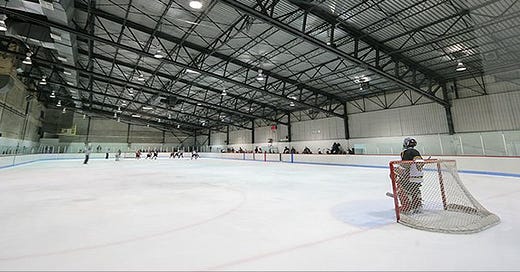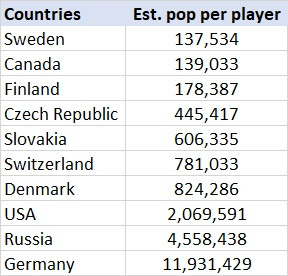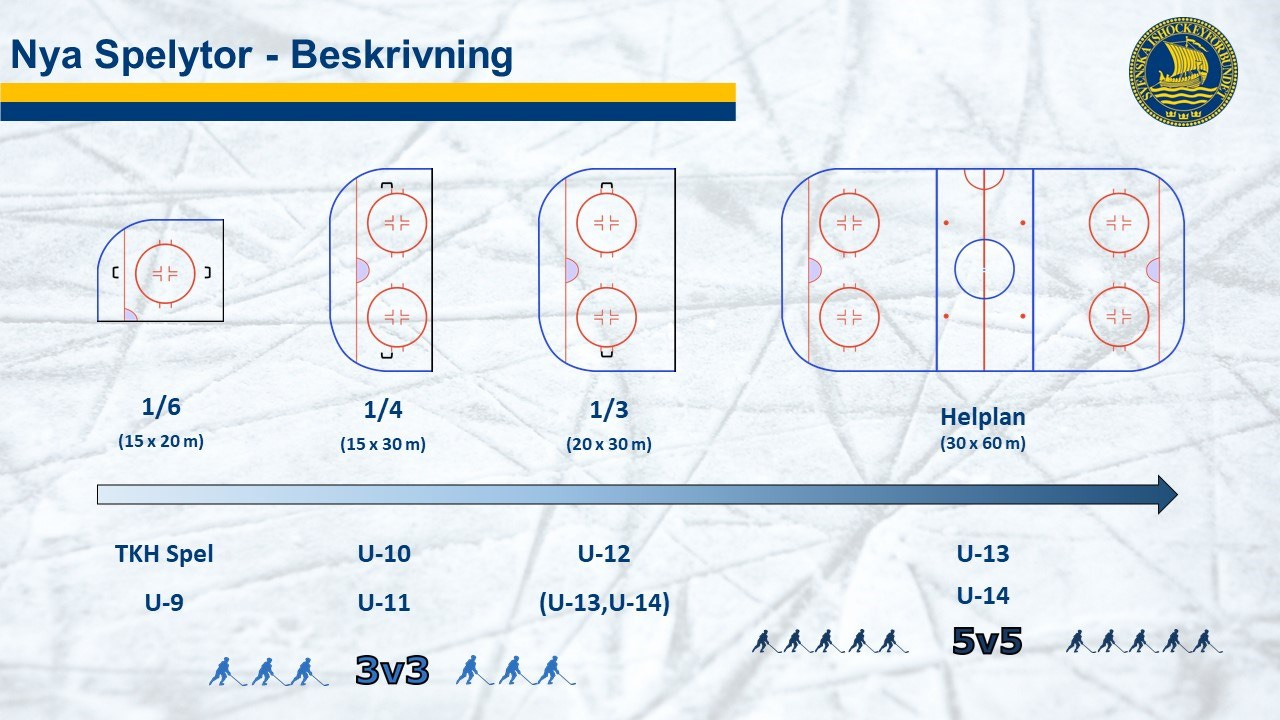USA Hockey Has Been Preaching Cross-Ice Hockey At The Younger Ages... And They're Right
Reflecting On Current Beliefs
The other day, I was walking through a local (Columbus, OH) rink on my way to the locker rooms and saw something that caught my eye.
And not in a good way.
It was a 10U recreational level spring hockey game being played at 3v3. But what caught my eye wasn’t that, nor was it the two young officials that seemed like overkill for the casual vibe on the ice.
What caught my eye was that the game was being played at full ice.
I want to be clear that I don’t intend for my tone to come across as judgmental. When I was a kid, probably around the same age, I played 3v3 full-ice spring hockey. I enjoyed it well enough to remember it, evidently, so… what exactly is the problem?
A Changing Philosophy
USA Hockey has been espousing the virtues of ‘cross-ice hockey’ for the past generation. And while it has gained a foothold at the 8U level, cross-ice hockey is still fairly rare at the older ages. From a USA Hockey article from 18 months ago:
A handful of USA Hockey programs have adopted the practice of 10U cross-ice, including the Alaska State Hockey Association.
“We’re currently in the second year of doing this,” said ASHA Vice President of Player Development Wayne Sawchuk. “We can get more kids on the ice. Looking at the science behind it, with puck touches, change of possession, and better decision-making, we felt it was going to be better for the development of the game.”
One of Sawchuk’s first tasks was educating coaches and parents on the concept so that they could fully understand and appreciate it. During a weekend tour last season, he and Rausch, who is also the ADM manager for the Alaska region, watched a 10U full-ice game, then had the same two teams play a cross-ice game the next day.
It was a 3- or 4-to-1 difference, with passes, shots on goal,” Sawchuk recalled. “The more parents watch a half-ice game, the more they can see the increase in intensity, and it’s faster than watching a full-ice game.”
The main complaints about cross-ice hockey are predictable; namely, that it’s not like “real hockey”. I hear that, and it’s true. But is playing “real hockey” what’s best for these kids?
One of the best videos to explain this is putting the full ice hockey in perspective that adults can understand:
Let’s Talk About The Benefits
Per the USA Hockey article, “In a 2013 study by Dr. Tomas Peric of Charles University in Prague, 84 players ages nine and 10 were tested using cross-ice and full-ice scenarios of 5-on-5, 4-on-4, and 3-on-3. Dr. Peric found substantial evidence that playing 5-on-5 full-ice was least helpful in a hockey player’s development at that age level.”
The reasons are simple. Less space means interaction, mainly more puck touches. More puck touches leads to more engagement. Greater engagement fosters more development. All of which, means more kids excelling at, and sticking with, the sport.
The smaller ice surface also makes players think/act quicker, which results in more frequent battles for the puck and ultimately better decision-making.
A tangential benefit, and one that cannot be overstated, is that it also lowers the cost of playing. More kids on the ice at once lowers the bill.
More puck touches, better decisions, lower cost to play, and tons of fun. What’s not to love?
Across the World
This isn’t a USA Hockey specific ideal. It’s used in all sports across the world. All of the top soccer academies in the world use this principle. This idea started in Brazil where their soccer teams dominated. Questioning why, an English schoolteacher, Simon Clifford went to Brazil in search of answers.
His answer came back as ‘Futsal’. Futsal is a 5v5 game played on a surface close to a basketball court. It’s fast-paced and requires everything we’ve talked about. For these reasons, it’s now spread to all corners of the globe.
This trend towards cross-ice games, even at the older ages, has been made popular in countries like Finland and Sweden, which are able to produce players at a much higher rate than in the USA (the below pic comes from an article from The Athletic from 2019). They are able to compete with much larger counties and succeed.
Finland and Sweden teamed up to do research into “Game formats for youth hockey”. Click the link to read the report. Here is the conclusion and steps forward:
According to these findings there will be some rule changes in Finland and in Sweden for the season 2020-2021. In Finland U11 and U12 leagues are played in small area and in full ice and in Sweden 6 districts will play only in small area for U11 and U12 leagues.
This is what it looked like in Sweden (Aside: Can we get those goalies an EasyCrease???):
It’s only a matter of time before this hops the pond to become a regular sight on the American continent.
As Martin St Louis mentioned on the Hockey IQ Podcast, tighter spaces are a fantastic way to develop players of all ability levels.
Listen on Apple Podcasts
Listen on Spotify
Listen to our embedded player over on our website
Observations From The Rink
Watching this particular game hurt my eyes, and not because of the age or the skill level. Kids would regularly go entire shifts without getting anywhere near the puck, much less actually playing with it. The one kid who was marginally better than the rest may as well have been skating on the wide-open plains of Africa, with nothing but ice in front of him. On change of possessions, the players skated … and skated… and skated… only to turn around and do it all over again on the inevitable next change.
Was it a good workout? Sure. Was it “real hockey?” I would contend no.
Further Reading - The benefits of Watching Your Own Practice Film
Did you enjoy this newsletter?
Help us spread the ideas within and share it with the people you care about




